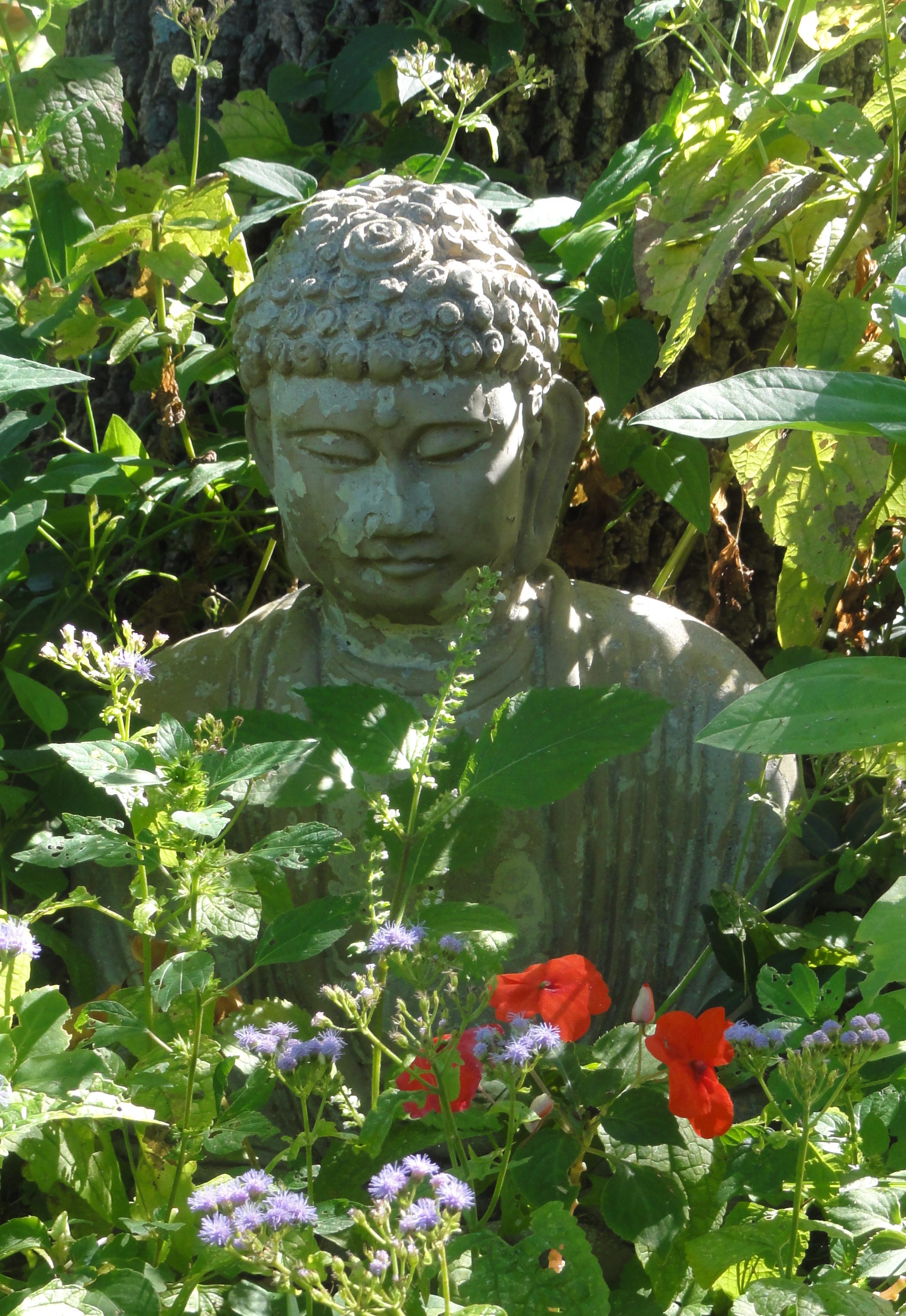Good morning!
We are now in Ohigan, the Other Shore, officially the equinox, meaning nirvana. Nirvana is equanimity, upekhā, lit. renunciation, like the equinox, balanced in day and night, heat and chill. As the fourth of the four stages of Zen, jhāna, informs us, nirvana is renouncing all psycho-physical fabrications (conceptions, emotions, volitions, etc.: the triple poisons: triple karmas).
In nirvana, one can see how all phenomena originate dependently on limitless causes and conditions. Simply put, it was called sa-hetu-dhamma, with-cause-dharma, causal law/truth. The most popular formalization is the Twelve-limbed Dependent Co-origination, paṭicca-samuppāda, illustrating how suffering originates depending upon craving, taṅhā, lit. thirst, and samsāra, complete constant becoming.
The root of dharma or dhamma is dhṝ, dwell or hold. Dharma means durable or firm form/phenomena and norm/law to our six senses, though in the awakened eye, the third eye, awakening/prognosis, all are related/relative dependently originated phenomena. When we say, “We take refuge in the Dharma” in the Triple Treasures, we mean the durable Dharma of Dependent Co-origination.
Dharma may include right and wrong or good and bad dharmas, but the Dharma of D.C. teaches us to choose the former as firm/durable or reliable/restful form/norm and phenomena/law. The Awakened Way maintains that sinful/separated/sick dharmas must be transformed to holy/wholly/wholesome dharmas through constant concentrated conduct with confidence/control/commitment.
9/22/18
Note: Paṭicca-samuppāda (Pali)/prati-itya-sam-ut-pāda (Sanskrit) literally means mutually-going-complete-up-let-fall, causing to originate by coming together like two bundles of reed leaning together to stand, two hands/cymbals coming together/contacting to originate sound. So, this was originally the description of the sense organs and objects contacting to originate sense perception/consciousness (cf. Contact, phassa/sparṣa, illustrates most conspicuously the origination/cessation of tactile perception, thus, used as the technical term to show the structure of the conjunction of the three, i.e., sense organ/object/perception). This demonstrates that the term was originally only representing this mechanism of dependent co-origination of perception/consciousness dependent on sense organs and objects, but later on it was used to show the twelve-limbed Dependent Co-origination. The other parts are more linear causal relations (nidāna) between causes (craving/nescience) and effects (suffering/samsara) without this core mechanism of contact/coming together (of organs/objects, dynamic cooperative conative relation).
お早うございます!
私達は今お彼岸、暦では秋分、ですがそれは涅槃を意味します。涅槃は平静、原意は捨、で、昼夜・寒暖の平均状態の(平)分点のように放棄を意味します。禅、禅那、の四段階の第四位が語るように、涅槃は一切の身心造作(観念・感情・意志等:三毒:三業)を放棄することです。
涅槃において人は一切の現象が無限の因縁(直接因・間接縁:原因・条件)に基いて生起するのを見る事が出来ます。簡潔には「有因法」因に縁る法です。最も周知のものは十二支縁起で、苦が欲望、原意は渇愛、と流転、原意は完全常時の生成に縁って起きることを表示します。
法の語根はdhṝで住す:保つです。法は感官に把握される維持・堅固なform形・現象とnorm則・法則を意味しますが、覚眼・第三の眼・覚悟・智慧には一切は相依相対縁起(因縁生起)現象です。三帰依の中「南無帰依法」と言う時永続する縁起を意味します。
法は善悪・正邪の法を含みますが、縁起の法は前者を堅固・依拠/信頼・安楽な形・則あるいは現象・法則として選ぶよう教えています。覚道は常時・集中した信念・統禦・献身した行為で罪悪・分離・病患の法を聖性・全体・健全な法に転換することを堅持しています。
2018共通年9月22日
註:縁起の原語paṭicca-samuppāda (Pali)/prati-itya-sam-ut-pāda (Sanskrit)葦の二束が互いに寄り合って立つように、あるいは両手・両シンバルが打ち合って音をだすように二つのものが行き合って(新しい事・音・現象)を発生することを意味します。ですからこらは元来感覚器官と感覚対象が接触して感覚(知覚・意識)を発生するのを述べるものでした(参考:接触phassa/sparṣaは感官の中でも最も明瞭に触感の生起・消滅を例示しますので、接触(触)が三事和合、感覚器官・感覚対象・感覚知覚の三つの接触の機構を示す術語となりました。)これは元来この(三事和合:縁起という)術語は感覚器官と感覚対象に縁って知覚・意識の縁起の機構を表現するものでしたが、後になって十二支縁起全体を示す為に使用されました。(知覚・意識の発生:縁起)以外の部分は(感覚器官と感覚対象の:動的な共働・共生の関係)の接触の機構無しの原因(欲望・無明)と結果(苦・流転)の間の線形の因果関係です。







